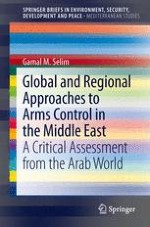Since the end of the Cold War, the Middle East has been the focus of various projects for the establishment of arms control (including CBMs) regimes. Whereas some of these projects were initiated at the global level, others were discussed and debated at the regional level. This book analyses the global and regional dynamics of arms control in the Middle East in the post-Cold War era. It examines American and European arms control projects, the contexts in which they were presented, the reactions of major regional actors, and their impacts on arms control efforts in the region. It assesses Arab perceptions of the motivations for and constraints on establishing arms control regimes. It also explores the prospects of regional arms control in the context of the ongoing Arab Spring with its ramifications for Arab regional politics, and provides a new perspective on arms control in the Middle East. This volume enriches the ongoing discourse, which to date has been dominated by mainly Western perspectives.
